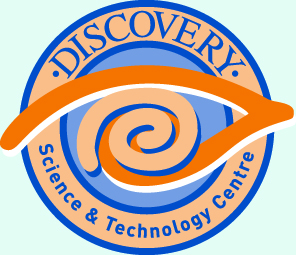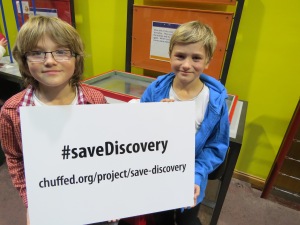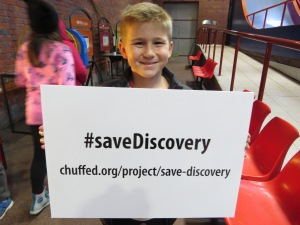As the Bendigo community decides whether to keep the Discovery Science and Technology Centre open, it may be pertinent to consider recent research on the impact of science centres and STEM (science, technology, engineering and mathematics) education, and their place in Australia’s technological and industrial future. This piece, written by Craig Cormick, originally appeared in the Sydney Morning Herald on 1 January, 2015.
Will building a hands-on science centre in outer Sydney lead to an increase in students in the area studying science and engineering, and, subsequently, an increase in innovation? It is an important question to ask before committing funds to the project.
Australia likes to pride itself on being an innovative nation but the reality is that the benchmark for innovation has moved a lot further beyond inventions such as the Hills Hoist, stump-jump ploughs or fencing wire solutions.
Building a science and innovation capability along with an entrepreneurial culture should be priorities for Australia.
To build a nation that values learning, science, technology and skills, a lot of attention has been placed on education in schools and ways to better teach, or increase participation in science, technology, engineering and mathematics (STEM). Rather less attention has been placed on developing creativity, imagination and thinking skills.
STEM education in schools is important, of course, but we should also understand that a huge amount of scientific learning occurs outside of the limited school hours.
In a challenging article in American Scientist, US researchers John Falk and Lynn Dierking stated: “The ‘school first’ paradigm is so pervasive that few scientists, educators or policymakers question it. This, despite two important facts: average Americans spend less than 5 per cent of their life in classrooms, and an ever-growing body of evidence demonstrates that most science is learnt outside of school.”
While Australia is not America, the point is well made, and we need to remember that learning is lifelong, and much of the science and technology we learn at school will be increasingly out of date as we grow older.
A 2014 survey by the Australian National University shows that the three major ways that the Australian public engage with science is through: talking with friends and family (82 per cent), visiting a science centre or museum of other science-related place (66 per cent) and listening to a science debate or lecture (42 per cent).
This raises a crucial question as to where we should be putting our efforts if we really want to widely improve public understanding of science, technology and innovation. Australia needs a strong, informal learning sector working alongside school-based education.
Questacon, the National Science and Technology Centre, receives almost 430,000 visitors a year to its buildings in Canberra, and reaches out to another 560,000 people through its travelling programs. The most well-known program, the Shell Questacon Science Circus (approaching its 30th anniversary in 2015) visited more than 330 venues last financial year, covering 20,000 kilometres around Australia. And, vitally, prior to the Science Circus visiting these places, many of the residents in these communities had limited access to this kind of science exposure or interaction. Also, through national programs that are Questacon-led, such as National Science Week and Inspiring Australia, another 2 million people are reached.
These are significant numbers in anyone’s view, but another critical question for the dozen or so members of the science centre sector is: what impact are we having?
As science centres evolve,we need to make sure that we are having an effect. We need to know that we are not just measuring delight on the day, and know that the way people engage with us has a catalytic effect on increasing their interest in science, or even prompting them to consider scientific careers.
The International Science Centre Impact Study was commissioned by a consortium of 17 science centres (including Questacon) across 13 countries, and found that for both youth and adults, visiting a science centre significantly correlated with increased science and technology knowledge, as well as interest in science as a school subject.
In particular, the study found that visiting a science centre significantly correlated with increased confidence and curiosity in science as an out-of-school activity. Not surprisingly, the longer, and the more recent a science centre experience was, the stronger the correlations were.
This is not the first study that looked at the affect of informal science learning, but it is the first on this scale.
An earlier study undertaken by the Programme for International Student Assessment (PISA) that is used to benchmark student levels in different countries, showed that a major predictor of high achievement on their test was having participated in out-of-school, free choice learning experiences, such as visits to science centres.
It is known from other research that attitudes to science careers are formed primarily outside of school time in early adolescence; the ages of 12 to 13 are critical for engaging people in science and keeping them, or losing them. Free choice learning experiences are the greatest contributors to adult science knowledge.
As the Chief Scientist, Professor Ian Chubb, has said: “We must align our scientific effort to the national interest; focus on areas of particular importance or need; and do it on a scale that will make a difference to Australia and a changing world.”
Dr Craig Cormick is a science communicator who has worked for CSIRO Education and Questacon. In 2014, he was awarded the Unsung Hero of Science Communication by the Australian Science Communicators.













